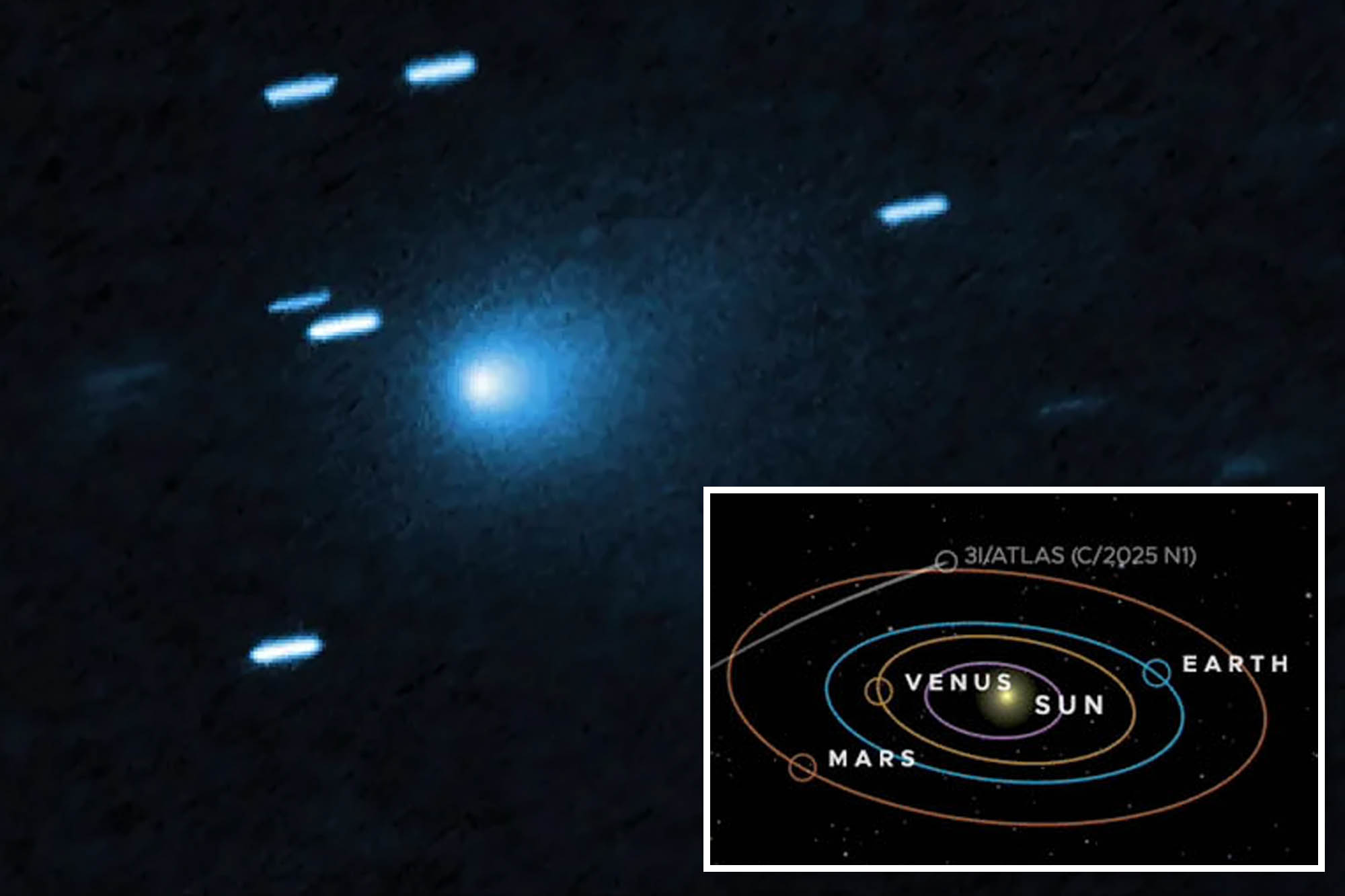Science
Scientists Investigate Unusual Behavior of Interstellar Object 3I/ATLAS

The interstellar object known as 3I/ATLAS has shown unexpected characteristics as it moved through our solar system, raising intriguing questions among scientists. This object, approximately the size of Manhattan, demonstrated signs of non-gravitational acceleration and appeared significantly “bluer than the Sun” during its recent pass. Avi Loeb, an astrophysicist at Harvard University, posited that these observations could suggest the presence of an artificial craft.
NASA recorded the object’s unusual acceleration this week, which is typically associated with dramatic outgassing similar to that of a comet. Such a process could lead to 3I/ATLAS losing about half its mass and producing a substantial plume of debris over the next few months. In a recent post on Medium, Loeb noted, “This might also explain the report on 3I/ATLAS getting ‘bluer than Sun.’” He speculated that the acceleration could indicate a technological signature of some kind of internal engine, or it might simply be a natural phenomenon associated with comets.
Unprecedented Observations and Future Passes
Due to its trajectory, Earth-based telescopes were unable to take direct measurements as 3I/ATLAS approached within 172 million miles of the Sun. Fortunately, several spacecraft that orbit the Sun ahead of Earth managed to capture data revealing a “rapid brightening,” with the object appearing distinctly different in color compared to earlier observations, which identified it as red and then green. According to a report from the US Naval Research Lab, the hue change is “very surprising” and adds to the mystery surrounding this interstellar visitor.
3I/ATLAS is expected to make its closest approach to Earth on December 19, 2023, passing at a distance of approximately 167 million miles. This encounter will provide researchers on Earth their best opportunity to analyze whether this object is indeed a comet or something more extraordinary. Loeb expressed that if no significant cloud of gas is observed around 3I/ATLAS during this pass, it could imply the existence of a propulsion system.
NASA’s Response and Public Concerns
Loeb has been critical of NASA for not releasing images captured by the Mars Reconnaissance Orbiter during the object’s close approach to the Red Planet in early October. Sources indicated that the highly anticipated images will not be made available until the government reopens.
In response to public concerns about the object, NASA’s Acting Administrator, Sean Duffy, sought to alleviate fears by stating, “NASA’s observations show that this is the third interstellar comet to pass through our solar system.” He reassured the public that there is “no threat to life here on Earth,” dismissing claims of extraterrestrial activity associated with 3I/ATLAS. Duffy’s statements were directed towards a question from celebrity Kim Kardashian on social media, highlighting the widespread interest in this celestial phenomenon.
As scientists continue to study the enigmatic characteristics of 3I/ATLAS, its upcoming approach could provide crucial insights into the nature of interstellar objects and the possibilities of advanced technology beyond our planet.
-

 Science2 weeks ago
Science2 weeks agoIROS 2025 to Showcase Cutting-Edge Robotics Innovations in China
-

 World3 weeks ago
World3 weeks agoBravo Company Veterans Honored with Bronze Medals After 56 Years
-

 Politics2 weeks ago
Politics2 weeks agoJudge Considers Dismissal of Chelsea Housing Case Citing AI Flaws
-

 Lifestyle3 weeks ago
Lifestyle3 weeks agoStone Island’s Logo Worn by Extremists Sparks Brand Dilemma
-

 Health2 weeks ago
Health2 weeks agoStartup Liberate Bio Secures $31 Million for Next-Gen Therapies
-

 Top Stories3 weeks ago
Top Stories3 weeks agoIndonesia Suspends 27,000 Bank Accounts in Online Gambling Crackdown
-

 Health3 weeks ago
Health3 weeks agoTop Hyaluronic Acid Serums for Radiant Skin in 2025
-

 Sports3 weeks ago
Sports3 weeks agoMel Kiper Jr. Reveals Top 25 Prospects for 2026 NFL Draft
-

 World3 weeks ago
World3 weeks agoHoneywell Predicts Record Demand for Business Jets Over Next Decade
-

 Sports3 weeks ago
Sports3 weeks agoYamamoto’s Mastery Leads Dodgers to 5-1 Victory in NLCS Game 2
-

 Lifestyle3 weeks ago
Lifestyle3 weeks agoMary Morgan Jackson Crowned Little Miss National Peanut Festival 2025
-

 Science3 weeks ago
Science3 weeks agoArizona State University Transforms Programming Education Approach









